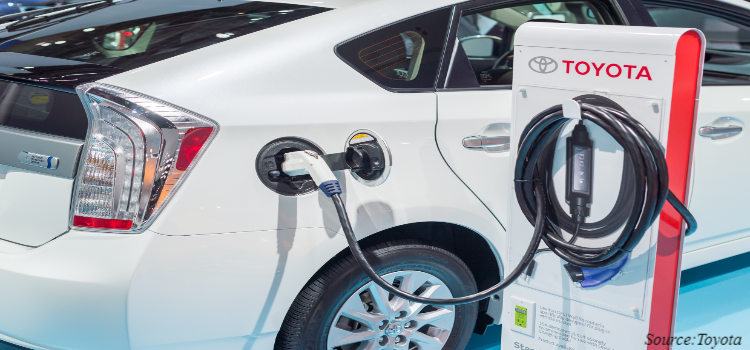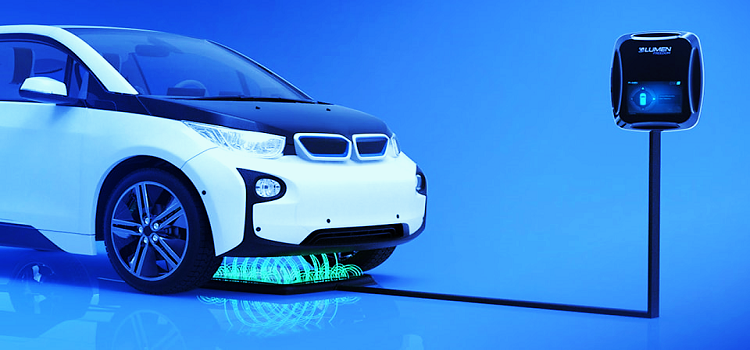
Italy Electric Vehicle (EV) Charging Market by Charging Type (Off-Board Top-Down Pantograph, On-Board Bottom-Up Pantograph, and Charging Via Connector), Charging Voltage Level (Level 1 (<3.7 KW), Level 2 (3.7–22 KW), and Level 3 (Above 22 KW)), Charger Type (Slow Charger and Fast Charger), Vehicle Charging (AC, DC, Inductive Charging), Application (Commercial and Residential), Commercial (Commercial Public EV Charging Stations, On-Road Charging and Commercial Private EV Charging Stations), Installation Type (Portable Charger and Fixed Charger), IoT Connectivity (Non-Connected Charging Stations and Smart Connected Charging Stations (Networked)) and Charging Standard (CCS, CHADEMO & GB/T, Type 1/Normal Charging, Tesla Super Charger, Type-2, and Level 3) – Opportunity Analysis and Industry Forecast 2023–2030
Industry: Automotive & Transportation | Publish Date: 25-Sep-2023 | No of Pages: 90 | No. of Tables: 72 | No. of Figures: 41 | Format: PDF | Report Code : N/A
Market Definition
Italy Electric Vehicle (EV) Charging Market was valued at USD 258.71 million in 2022, and is predicted to reach USD 2132.2 million by 2030, with a CAGR of 30.9% from 2023 to 2030. Electric vehicle chargers are essential components defined by the rate at which they deliver energy to an electric vehicle's battery. They form a crucial infrastructure connecting plug-in electric vehicles to power sources for recharging their batteries. These chargers play a pivotal role in facilitating the charging process for electric vehicles, including neighborhood EVs and plug-in hybrids, by linking them to electrical sources. Some charging stations even come equipped with advanced features like smart meters, cellular connectivity, and network access, enhancing their functionality.
Charging electric vehicles can occur through various levels, including level 1, level 2, and level 3. The charging speed escalates with higher levels, resulting in more power being delivered to the vehicle, reducing charging time significantly. Importantly, the adoption of electric vehicles contributes significantly to reducing carbon emissions and harmful gases, thus mitigating the environmental impact of transportation.
Recognizing the pressing need to address carbon emissions, electric vehicle charging infrastructure has seen higher penetration in commercial spaces than in residential areas. Public charging infrastructure, offering ultra-fast charging capabilities, proves invaluable for long-distance travel. Nonetheless, the residential sector presents substantial growth potential for EV chargers due to their affordability and convenience, making them an attractive option for those seeking a practical and accessible way to charge their electric vehicles.
Government Subsidies and Net-Zero Carbon Emission Mission Drive Italy's EV Charging Market Growth
The expansion of the EV charging market in Italy is being significantly bolstered by the increasing government subsidies aimed at making electric vehicles accessible to all, aligning with their mission to achieve net-zero carbon emissions. These subsidies serve as powerful incentives for consumers, encouraging widespread adoption of EVs and, consequently, driving the demand for EV charging infrastructure across the country.
For instance, the government of Italy is offering USD 4,400 subsidy for vehicles with CO2 emissions between 21 and 70 g/km, and a USD 1,650 subsidy for vehicles with emissions between 21 and 70 g/km. There is also a provision for a 50% subsidy of up to USD 3,300 for the deployment of EV chargers.
Local Players' Diverse Strategies Fuel Growth in the EV Charging Market
The active involvement of numerous local players in the EV charging market in Italy, such as BorgWarner, Eni gas e luce, Enel X, Be Charge, Porsche Italia, Enel X, Q8, among others, through strategies such as product launches, partnerships, and collaborations, is playing a pivotal role in driving the market's growth. These companies' combined efforts are contributing to the development and expansion of the electric vehicle charging infrastructure in the country, fostering a more sustainable and accessible environment for EV users.
For instance, in August 2022, BorgWarner installed its fast-charging station Iperion-120 fast-charging in Italy. The Iperion-120 is a superior product in terms of efficiency. It can charge one vehicle at 120 kW very quickly or two at 60 kW each. The Iperion-120 can provide 800 volts of power for BEVs as well as future generation batteries with an output voltage of up 900 volts.
Fast Chargers' High Initial Setup Costs Hinder the EV Charging Market Growth
Lack of incentives and worries about the high installation costs of EV charger installation could prevent the growth of the sector. One of the biggest barriers to the expansion of this business is the high initial cost of level 3 and ultra-fast chargers. While level 1 and level 2 chargers can take anything from 6 to 16 hours to fully charge, consumers typically charge their fossil fuel vehicles in 5 to 7 minutes.
Fast chargers that can charge EVs in under 30 minutes are therefore in demand on the market. A level 3 charging station can be somewhat expensive at first, though. For those who might want to transition to EVs, this could be a deterrent because a lengthy charging period might interfere with their already hectic schedules.
Surging Adoption of Vehicle-to-Grid (V2G) EV Charging Stations in Italy Unlocks Promising Opportunities
A technology called vehicle-to-grid (V2G) EV charging allows plug-in EVs and the power grid to exchange electrical energy in both directions. Electric vehicles (EVs) can store extra electricity and release it to the grid thanks to V2G technology. This may enhance the functionality of the electrical component and increase value for EV owners.
The development of this concept has made charging for electric vehicles easier, and EVs are now among people's top transportation options. As a result, the entire market for charging stations is essential for connecting the electric vehicle to the grid and enabling the vehicle to charge.
Two V2G EV vehicle charging stations were erected by Enel Energia S.p.A. at the Italian Institute of Technology's Genoa headquarters. The installation is a part of MOV-E, a Nissan-sponsored corporate electric car sharing trial project. The Italian Institute of Technology received two battery electric vehicles (LEAF models) from Nissan as well as the Glide app management platform. The partnership between Enel and Nissan represents a shift in the way that technology is used for sustainable transportation.
As a result, manufacturers have a great chance with the V2G charging technology because it is predicted to change the EV industry and determine how EVs will be charged in the future. Although V2G infrastructure is more beneficial than smart charging, installing V2G charging stations has a hefty up-front cost. Manufacturers of EV connectors are projected to have opportunities to produce sophisticated connectors to withstand electrical architecture due to the predictable and anticipated expansion of V2G technology.
Competitive Landscape
The Italy Electric Vehicle (EV) Charging industry includes several market players such as ABB Ltd., ChargePoint, Inc, Tesla Inc, Shell Recharge Solutions, Star Charge, TELD, Siemens, BYD, EVgo, and Hyundai Motor Company.
KEY BENEFITS
-
The Italy Electric Vehicle (EV) Charging market report provides a quantitative analysis of the current market and estimations through 2023-2030 that assists in identifying the prevailing market opportunities to capitalize on.
-
The study comprises a deep dive analysis of the market trend including the current and future trends for depicting the prevalent investment pockets in the market.
-
The information related to key drivers, restraints, and opportunities and their impact on the market is provided in the report.
-
The competitive analysis of the market players along with their market share in the Italy Electric Vehicle (EV) Charging market.
-
The SWOT analysis and Porter’s Five Forces model are elaborated in the study.
-
Value chain analysis in the market study provides a clear picture of the stakeholders’ roles.
ITALY ELECTRIC VEHICLE (EV) CHARGING MARKET KEY SEGMENTS
By Charging Type
-
Off-Board Top-Down Pantograph
-
On-Board Bottom-Up Pantograph
-
Charging Via Connector
By Charging Voltage Level
-
Level 1 (<3.7 KW)
-
Level 2 (3.7–22 KW)
-
Level 3 (Above 22 KW)
By Charger Type
-
Slow Charger
-
Fast Charger
By IOT Connectivity
-
Non-Connected Charging Stations
-
Smart Connected Charging Stations (Networked)
By Vehicle Charging
-
AC (Normal Charging)
-
DC (Super Charging)
-
Inductive Charging
By Application
-
Commercial
-
Residential
By Commercial
-
Commercial Public EV Charging Stations
-
On-Road Charging
-
Parking Spaces
-
Destination Chargers
-
-
Commercial Private EV Charging Stations
-
Fleet Charging
-
Captive Charging
-
By Installation Type
-
Portable Charging
-
Fixed Charging
-
Wall Mount
-
Pedestal Mount
-
Ceiling Mount
-
By Charging Standard
-
CCS
-
CHADEMO & GB/T
-
Type 1/Normal Charging
-
Tesla Super Charger
-
Type-2
-
Level 3
REPORT SCOPE AND SEGMENTATION:
|
Parameters |
Details |
|
Market Size in 2022 |
USD 258.71 Million |
|
Market Volume in 2022 |
105 Thousand Units |
|
Revenue Forecast in 2030 |
USD 2132.2 Million |
|
Growth Rate |
CAGR of 30.9% from 2023 to 2030 |
|
Analysis Period |
2022–2030 |
|
Base Year Considered |
2022 |
|
Forecast Period |
2023–2030 |
|
Market Size Estimation |
Million (USD) |
|
Growth Factors |
Emergence of local market players. The increasing government initiatives. |
|
Companies Profiled |
10 |
|
Market Share |
Available for 10 companies |
|
Customization Scope |
Free customization (equivalent up to 80 working hours of analysts) after purchase. Addition or alteration to country, regional, and segment scope. |
|
Pricing and Purchase Options |
Avail customized purchase options to meet your exact research needs. |
KEY PLAYERS
-
ABB Ltd.
-
ChargePoint, Inc
-
Tesla Inc
-
Shell Recharge Solutions
-
Star Charge
-
TELD
-
Siemens
-
BYD
-
EVgo
-
Hyundai Motor Company




 Speak to Our Analyst
Speak to Our Analyst


































